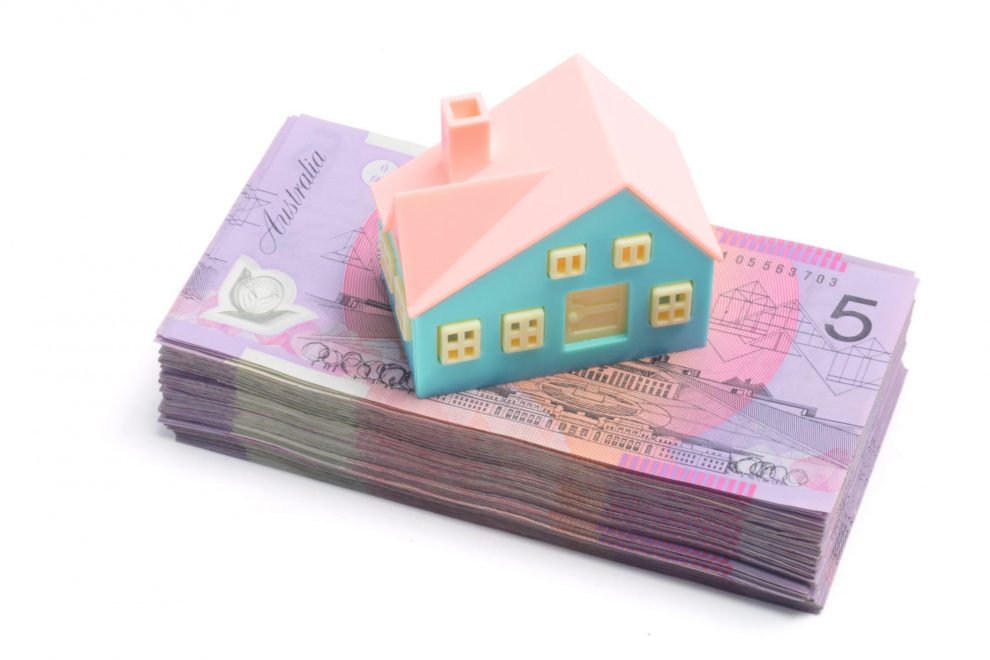The Association of Superannuation Funds of Australia (ASFA) today released its Retirement Standard updates for the December 2016 quarter showing a slight increase in the cost of living for retirees.
The Association also released new figures showing Sydney retirees relying on the private rental market for accommodation would need more than $1 million in super savings, as will all retiree couples living in Australian capital cities. Single retirees renting outside Sydney slip under the million dollar indicator.
ASFA CEO Dr Martin Fahy said whether single or in a couple, renting retirees in Sydney, that is those without a debt-free family home, were at a distinct financial disadvantage and would need about $1,045,000 and $1,166,000 at retirement respectively to reach the ASFA comfortable standard.
“This compares to $545,000 for a single and $640,000 for a couple who own their own home,” he said.
“For a single person renting privately in Sydney, around $320,000 is needed to support even a modest standard of living in retirement, with a couple needing around $450,000 to support a modest budget.”
Dr Fahy said one in 12 Australians aged more than 65 live in private rentals.
“Housing affordability and availability is a significant and increasing concern for many Australians and particularly impacts older Australians grappling with the private rental market,” he said.
ASFA estimates a single retiree renting privately in a one-bedroom unit in Sydney will need to spend $62,434 annually to be comfortable and a couple renting a two-bedroom unit will need to spend $79,801.
By comparison, ASFA comfortable retirement standard annual budgets for home owners in Sydney are around $43,300 for singles and $59,600 for couples.
“All estimates assume people are enjoying reasonable health, so any serious illness or disability makes the situation even more challenging, as does rental instability and associated costs,” Dr Fahy said.
“Compulsory superannuation contributions at 9.5 per cent fall well short of what is needed to support a comfortable standard of living in retirement for anyone renting privately.”
Currently around 75 per cent of households with the household head aged 65 and over own their home outright, 8 per cent are still paying off a mortgage and around 8 per cent are renting privately.
Housing affordability is a particularly serious challenge for residents of Sydney. Around 65 per cent of Sydney residents are home owners by the age of 60 compared to just under 80 per cent for the rest of the country.
Changes to ASFA Retirement Standard for December quarter
The ASFA Retirement Standard December quarter figures show budgets for retirees who own their own home have increased by 0.4 per cent for singles and 0.3 per cent for couples, at the comfortable level, compared to the previous quarter. Budgets for older retirees (those aged 85 and over) increased by less than 0.1 per cent.
At the modest level, budgets for retirees aged 65 increased by 0.5 per cent for singles and 0.4 per cent for couples. Budgets for older retirees (aged 85+) increased by less than 0.1 per cent.
The Consumer Price Index (CPI) rose 0.5 per cent in the December quarter 2016, according to the latest Australian Bureau of Statistics (ABS) figures. The small increase in the cost of retirement over recent quarters reflects moderate growth in the overall CPI.
In regard to the costs faced by all retirees, the most significant price rises in the December quarter were automotive fuel (+6.7%) and domestic holiday travel and accommodation (+5.5%). The most significant offsetting price falls this quarter were international holiday travel and accommodation (-2.6%), accessories (-5.1%) and waters, soft drinks and juices (-3.2%). The increase of the price of automotive fuel follows a 5.9 per cent increase the preceding quarter.
The main contributors to the rise in the food and non-alcoholic beverages group in the quarter were restaurant meals (+1.1%), other food products (+5.4%) and vegetables (+2.5%).
Over the last 1- months, the food and non-alcoholic beverages group rose 1.8%. The main contributors to the rise were vegetables (+12.5%), fruit (+6.9%) and restaurant meals (+2.4%).
The main contributor to the rise in the recreation and culture group in the December quarter was domestic holiday travel and accommodation (+5.5%). The rise in domestic holiday travel and accommodation is due to the October school holidays and the lead up to the peak summer holiday period.
Table 1: Budgets for various households and living standards for those aged around 65 (December quarter 2016, national)
| Modest lifestyle – single | Modest lifestyle – couple | Comfortable lifestyle – single | Comfortable lifestyle – couple | |
|---|---|---|---|---|
| Housing – ongoing only | $75.60 | $72.57 | $87.62 | $101.57 |
| Energy | $42.98 | $57.09 | $43.62 | $59.16 |
| Food | $78.83 | $163.30 | $112.62 | $202.71 |
| Clothing | $17.62 | $28.60 | $38.13 | $57.19 |
| Household goods and services | $27.36 | $37.09 | $76.95 | $90.14 |
| Health | $43.96 | $84.84 | $87.22 | $153.93 |
| Transport | $92.34 | $94.96 | $137.60 | $140.22 |
| Leisure | $75.45 | $112.41 | $228.64 | $313.32 |
| Communications | $8.22 | $14.39 | $22.58 | $28.74 |
| Total per week | $462.35 | $665.23 | $834.98 | $1,147.00 |
| Total per year | $24,108 | $34,687 | $43,538 | $59,808 |
The figures in each case assume that the retiree/s own their own home and relate to expenditure by the household. This can be greater than household income after income tax where there is a drawdown on capital over the period of retirement. Single calculations are based on female figures. All calculations are weekly, unless otherwise stated.
Table 2: Budgets for various households and living standards for those aged around 85 (December quarter 2016, national)
| Modest lifestyle – single | Modest lifestyle – couple | Comfortable lifestyle – single | Comfortable lifestyle – couple | |
|---|---|---|---|---|
| Housing – ongoing only | $75.60 | $72.57 | $87.62 | $101.57 |
| Energy | $42.98 | $57.09 | $43.62 | $59.16 |
| Food | $78.83 | $163.30 | $112.62 | $202.71 |
| Clothing | $17.62 | $28.60 | $38.13 | $57.19 |
| Household goods and services | $48.02 | $68.08 | $149.29 | $172.80 |
| Health | $94.95 | $147.41 | $130.04 | $207.45 |
| Transport | $38.42 | $48.02 | $43.22 | $52.82 |
| Leisure | $48.07 | $71.71 | $124.24 | $171.75 |
| Communications | $8.17 | $14.30 | $22.45 | $28.57 |
| Total per week | $452.66 | $671.08 | $751.23 | $1,054.03 |
| Total per year | $23,603 | $34,992 | $39,171 | $54,960 |
The figures in each case assume that the retiree/s own their own home and relate to expenditure by the household. This can be greater than household income after income tax where there is a drawdown on capital over the period of retirement. Single calculations are based on female figures. All calculations are weekly, unless otherwise stated.
Table 3: Budgets for various households and living standards for those aged around 65 and in private rental (December quarter 2016, Sydney rents)
| Modest lifestyle – single | Modest lifestyle – couple | Comfortable lifestyle – single | Comfortable lifestyle – couple | |
|---|---|---|---|---|
| Housing – ongoing only | $320.00 | $400.00 | $450.00 | $485.00 |
| Energy | $42.98 | $57.09 | $43.62 | $59.16 |
| Food | $78.83 | $163.30 | $112.62 | $202.71 |
| Clothing | $17.62 | $28.60 | $38.13 | $57.19 |
| Household goods and services | $27.36 | $37.09 | $76.95 | $90.14 |
| Health | $43.96 | $84.84 | $87.22 | $153.93 |
| Transport | $92.34 | $94.96 | $137.60 | $140.22 |
| Leisure | $75.45 | $112.41 | $228.64 | $313.32 |
| Communications | $8.22 | $14.39 | $22.58 | $28.74 |
| Total per week | $706.75 | $992.66 | $1,197.36 | $1,530.43 |
| Total per year | $36,851 | $51,760 | $62,434 | $79,801 |
The rents used in the table are based on NSW Government data for Sydney.
Sydney is one of Australia’s more expensive cities for renting, but average rentals for one and two bedroom apartments in inner and middle rings of Canberra, Melbourne, Darwin, Brisbane and Perth would not be dissimilar. For example, rents in Melbourne are slightly lower on average than in Sydney.
At the modest level, a single retiree renting privately in the outer ring of Melbourne might pay a weekly rent of $300 a week while a couple might pay $360. For a single retiree at the comfortable level renting in the middle ring the rent would be around $370 a week while for a couple the rent would be around $400 a week. As a result the lump sum at retirement needed for a couple who are renting privately in Melbourne is more than $1.1 million to be comfortable and around $940,000 for a single retiree.
Rents for apartments in Adelaide and Hobart tend to be a little lower on average, particularly in outer areas of those cities. Substantially lower rents can be the case for regional cities and towns.
Retirees renting – couple
| Modest lifestyle annual expenditure – couple | Modest lifestyle – lump sum needed at retirement | Comfortable lifestyle annual expenditure – couple | Comfortable lifestyle – lump sum needed at retirement | |
|---|---|---|---|---|
| Canberra | $48,610 | $376,000 | $78,910 | $1,150,000 |
| Sydney | $51,570 | $450,000 | $79,801 | $1,166,000 |
| Melbourne | $49,402 | $396,000 | $77,472 | $1,115,000 |
| Brisbane | $49,368 | $395,000 | $77,342 | $1,112,000 |
| Adelaide | $45,495 | $300,000 | $73,447 | $1,015,000 |
| Perth | $45,627 | $300,000 | $73,779 | $1,022,000 |
| Hobart | $45,396 | $295,000 | $73,514 | $1,016,000 |
| Darwin | $48,653 | $377,000 | $75,837 | $1,074,000 |
Retirees renting – single
| Modest lifestyle annual expenditure – couple | Modest lifestyle – lump sum needed at retirement | Comfortable lifestyle annual expenditure – couple | Comfortable lifestyle – lump sum needed at retirement | |
|---|---|---|---|---|
| Canberra | $38,121 | $352,000 | $59,729 | $977,000 |
| Sydney | $36,851 | $320,000 | $62,434 | $1,045,000 |
| Melbourne | $37,033 | $325,000 | $58,200 | $940,000 |
| Brisbane | $37,033 | $325,000 | $58,143 | $940,000 |
| Adelaide | $33,741 | $243,000 | $54,551 | $848,000 |
| Perth | $33,483 | $236,000 | $54,979 | $859,000 |
| Hobart | $33,794 | $245,000 | $54,992 | $859,000 |
| Darwin | $36,768 | $320,000 | $57,323 | $917,000 |
More information
Costs and summary figures can be accessed via the ASFA website. The ASFA Retirement Standard Calculator can be used to obtain a breakdown of the Retirement Standard budgets for each state. Australians can find out more about superannuation on the independent Super Guru website.






















Add Comment